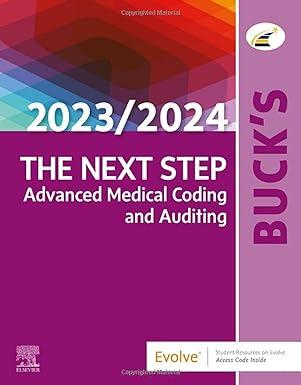Question
Maria Chavez owns a catering company that serves food and beverages at parties and business functions. Chavezs business is seasonal, with a heavy schedule during
Maria Chavez owns a catering company that serves food and beverages at parties and business functions. Chavezs business is seasonal, with a heavy schedule during the summer months and holidays and a lighter schedule at other times. One of the major events Chavezs customers request is a cocktail party. She offers a standard cocktail party and has estimated the cost per guest as follows: Food and beverages $ 17.00 Labor (0.5 hour @ $10.00 /hr.) 5.00 Overhead (0.5 hour @ $18.66/hr.) 9.33 Total cost per guest $ 31.33 The standard cocktail party lasts three hours and Chavez hires one worker for every six guests, so that works out to one-half hour of labor per guest. These workers are hired only as needed and are paid only for the hours they actually work. When bidding on cocktail parties, Chavez adds a 13% markup to yield a price of about $40 per guest. She is confident about her estimates of the costs of food and beverages and labor but is not as comfortable with the estimate of overhead cost. The $18.66 overhead cost per labor-hour was determined by dividing total overhead expenses for the last 12 months by total labor-hours for the same period. Monthly data concerning overhead costs and labor-hours follow: Month Labor-Hours Overhead Expenses January 3,000 $ 50,000 February 2,100 54,000 March 2,300 55,000 April 3,500 59,000 May 3,800 62,000 June 4,800 66,000 July 5,800 69,000 August 6,800 72,000 September 6,300 70,000 October 3,800 63,000 November 3,400 59,000 December 5,800 67,000 Total 51,400 $ 746,000 Chavez has received a request to bid on a 200-guest fundraising cocktail party to be given next month by an important local charity. (The party would last the usual three hours.) She would like to win this contract because the guest list for this charity event includes many prominent individuals that she would like to secure as future clients. Maria is confident that these potential customers would be favorably impressed by her companys services at the charity event. 2a. Use the least-squares regression method to estimate the fixed and variable components of overhead expenses. 2b. Express these estimates in the form Y = a + bX. If Chavez charges her usual price of $40 per guest for the 200-guest cocktail party, how much contribution margin will she earn by serving this event? (Round your intermediate calculations and final answers to 2 decimal places.) How low could Chavez bid for the charity event in terms of a price per guest and still break even on the event itself? (Round your answer to the nearest whole dollar amount.)
Step by Step Solution
There are 3 Steps involved in it
Step: 1

Get Instant Access to Expert-Tailored Solutions
See step-by-step solutions with expert insights and AI powered tools for academic success
Step: 2

Step: 3

Ace Your Homework with AI
Get the answers you need in no time with our AI-driven, step-by-step assistance
Get Started


